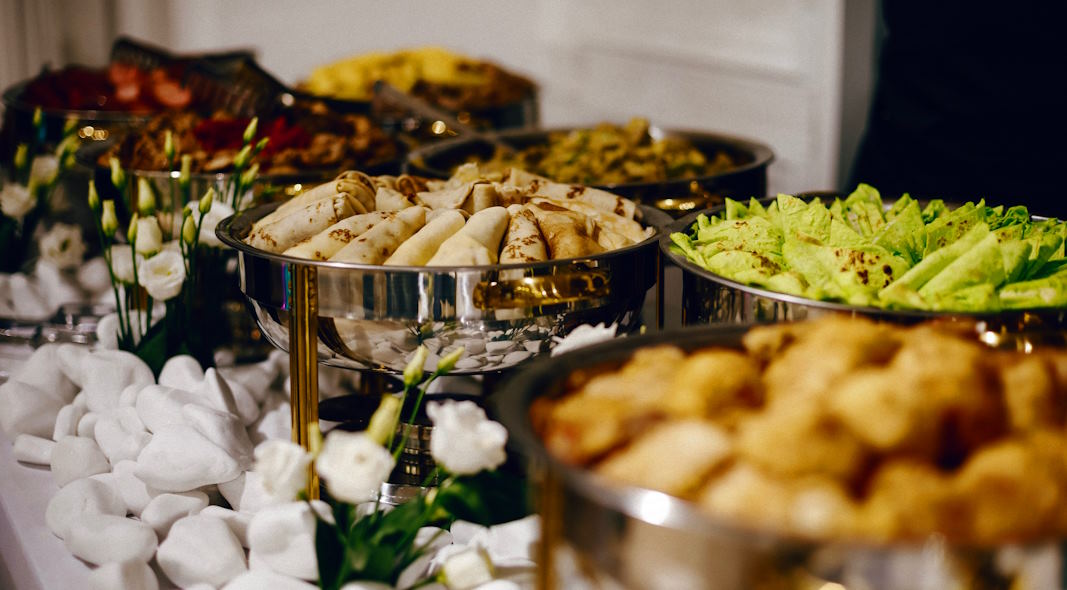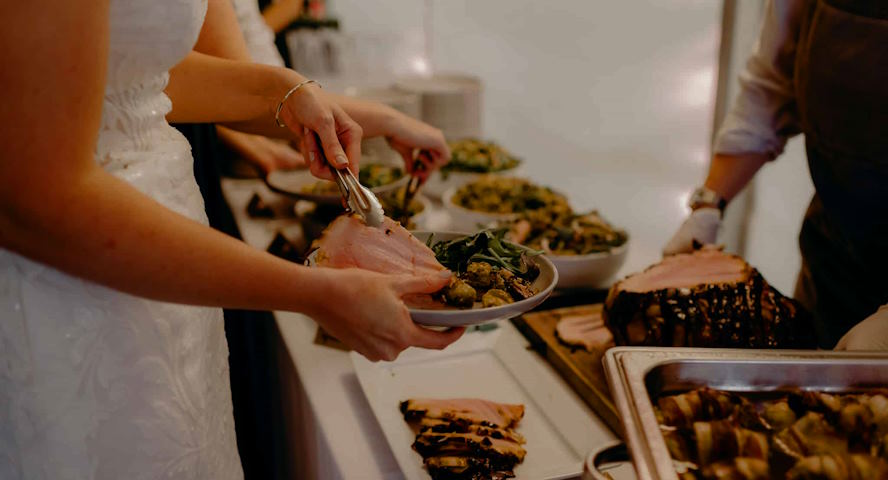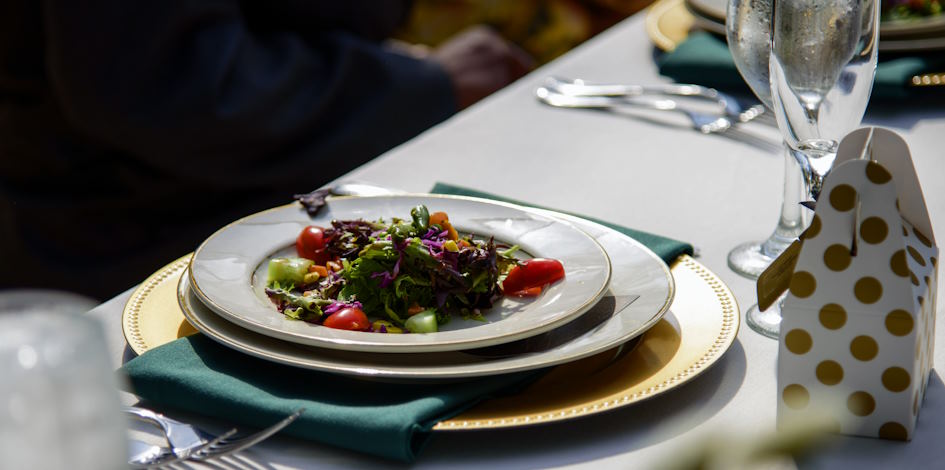Food plays a central role in the celebration of love and union during wedding receptions. Among the myriad of decisions couples must make in planning their special day, choosing the dining style—whether a buffet or plated dinner—ranks high in importance. Both options offer distinct advantages and considerations that can significantly impact the overall atmosphere and guest experience. Understanding the nuances of each dining format is essential for couples seeking to create a memorable and enjoyable reception that reflects their personalities and priorities.
Buffet Dinner
A buffet dinner is a dining style where guests serve themselves from a spread of various dishes arranged on a table or multiple stations. This format offers guests the freedom to choose their own portions and select from a wide array of culinary options, creating a more interactive dining experience.
Advantages:
- Variety and customization options: One of the primary advantages of a buffet dinner is the extensive variety of dishes available. From appetizers to main courses and desserts, guests can sample an assortment of flavors and cuisines to suit their preferences. Additionally, buffets often offer customizable options, such as build-your-own stations or dietary accommodations, ensuring that all guests can find something to enjoy.
- Encourages mingling and socializing: Buffet dinners promote a relaxed and convivial atmosphere, as guests move freely around the dining area, interacting with one another while selecting their food. This informal setup encourages mingling and socializing among guests, fostering a sense of community and camaraderie throughout the reception.
- Potentially more cost-effective: In many cases, buffet dinners can be more cost-effective than plated dinners, as they require fewer staff members for service and offer flexibility in portion control. With a buffet, couples can often provide a diverse menu at a lower per-person cost, making it an appealing option for those working within a tighter budget.
Disadvantages:
- Potential for longer wait times: Depending on the number of guests and the layout of the buffet stations, there is a risk of longer wait times as guests queue up to serve themselves. This can result in delays in dining and may disrupt the flow of the reception if not managed effectively.
- Limited control over portion sizes: Unlike plated dinners, where portion sizes are predetermined and controlled by the caterers, buffets rely on guests to regulate their own servings. This lack of portion control can lead to excess food waste or shortages if not carefully monitored.
- May require more space and staffing: Buffet setups typically require more space and staffing than plated dinners, as multiple serving stations must be arranged to accommodate guests efficiently. Additionally, extra staff may be needed to replenish dishes, clear tables, and maintain the cleanliness of the dining area throughout the event.
Plated Dinner
A plated dinner is a formal dining style where guests are seated at designated tables and served pre-portioned meals by waitstaff. This elegant dining format offers a refined and sophisticated experience, with each guest receiving a meticulously plated dish at their seat.

Advantages:
- Elegant presentation: Plated dinners are renowned for their exquisite presentation, with each dish carefully crafted and arranged by professional chefs. The visually appealing presentation adds a touch of elegance and sophistication to the reception, creating a memorable dining experience for guests.
- Controlled portion sizes: Unlike buffet dinners, where guests serve themselves and portion sizes can vary, plated dinners offer controlled portion sizes predetermined by the caterers. This ensures that each guest receives an appropriate serving of food, minimizing waste and providing a more refined dining experience.
- Efficient service: With plated dinners, waitstaff are dedicated to serving each table, ensuring a smooth and efficient dining experience. Guests can relax and enjoy their meal without the need to navigate crowded buffet stations or wait in line, allowing for a more leisurely and enjoyable dining experience.
Disadvantages:
- Limited menu options: Plated dinners typically offer a limited selection of menu options compared to buffets, as each guest receives a predetermined meal. This may restrict choices for guests with dietary restrictions or preferences, potentially leading to dissatisfaction among some attendees.
- Higher cost per person: Plated dinners are often more expensive per person than buffet dinners, as they require additional staffing for table service and intricate plate presentation. The higher cost may pose budget constraints for couples planning their wedding reception, particularly for larger guest counts.
- Less opportunity for guest interaction: In contrast to buffet dinners, where guests mingle and socialize while serving themselves, plated dinners offer fewer opportunities for guest interaction. Seated at their assigned tables, guests may have limited opportunities to engage with others outside their immediate vicinity, potentially hindering the overall atmosphere of the reception.



 Maria Cropper, a seasoned wedding expert, brings boundless creativity and passion to her blog. With a keen eye for detail and a love for romance, she curates inspiring content that guides couples on their journey to a dream wedding.
Maria Cropper, a seasoned wedding expert, brings boundless creativity and passion to her blog. With a keen eye for detail and a love for romance, she curates inspiring content that guides couples on their journey to a dream wedding.